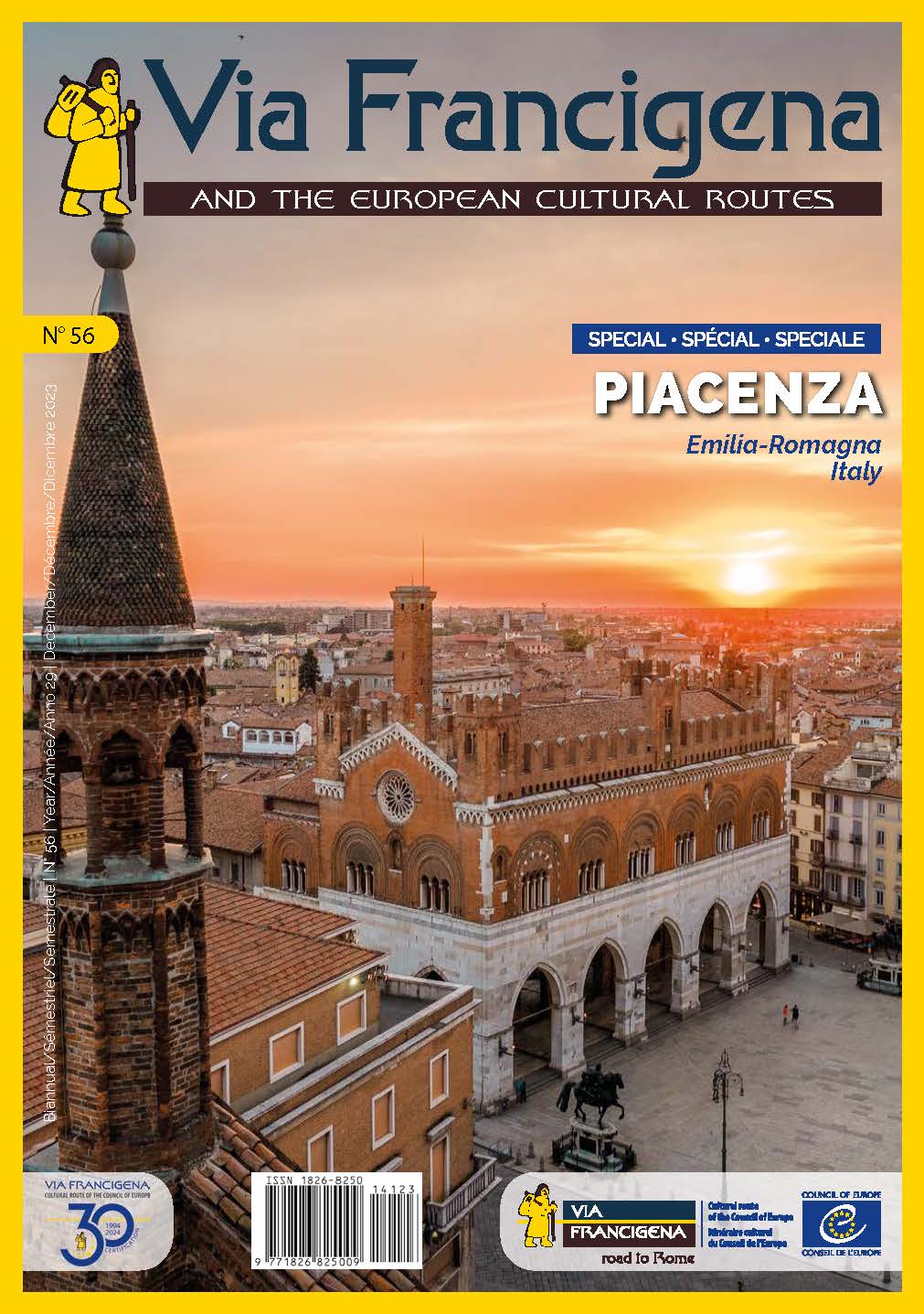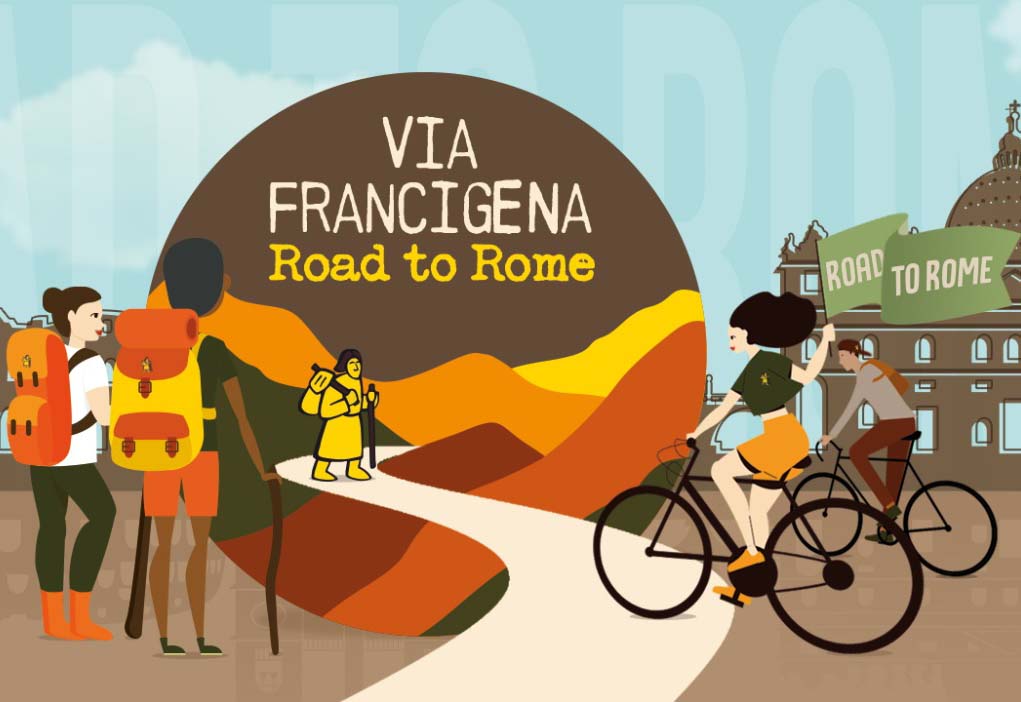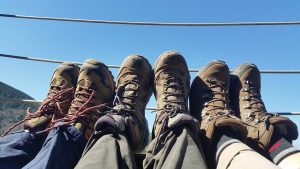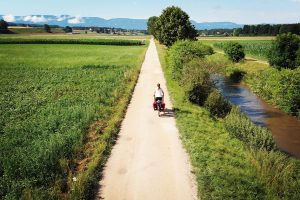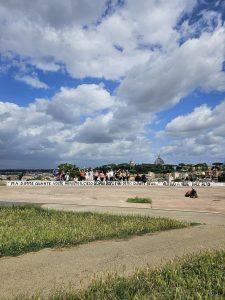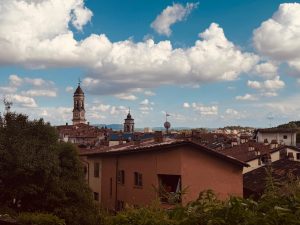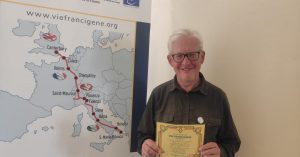Cooking on a Long Walk? Why bother, you may ask, when there are all those restaurants out there serving local specialties and delicious “pilgrim menus” for fifteen euros. Well, that’s the case on the Via Francigena in Italy, and on the most popular Camino de Santiago routes in Spain, but not on all walking routes! On my first Long Walk, the Via Francigena from my home in Italy to Rome, I relied primarily on pilgrim menus, appreciating the changes in the local cuisine as I proceeded southwards across Tuscany and into the region of Lazio. One of my most memorable evenings was spent dining before a roaring fireplace in the castle in Proceno, served a three-course meal by the Lady of the Castle herself – all for 15 euros!
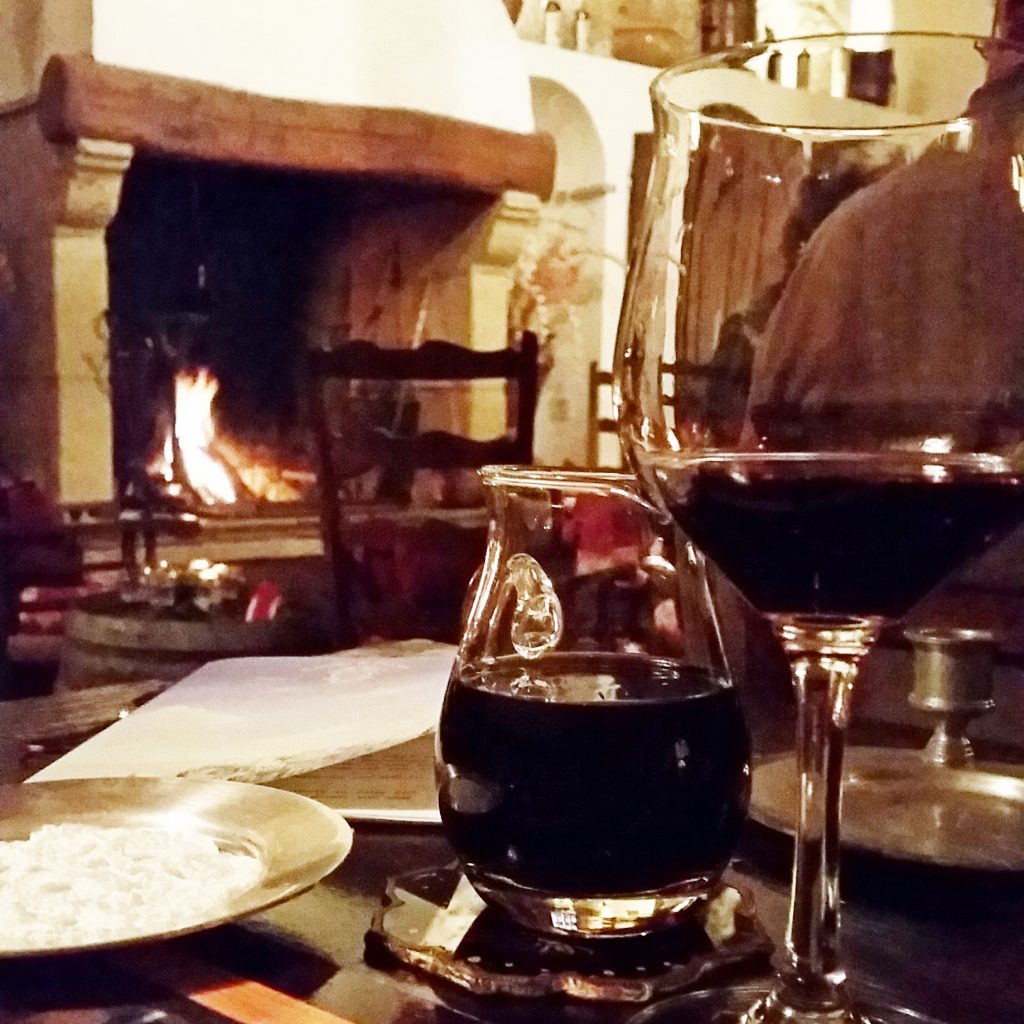
But this is not the case on all Long Walks. When, having set out in the opposite direction, aiming (eventually) for Santiago, my friend and I went out looking for dinner on our first night in France, we found that a plain cheese and tomato pizza would set us back 17 euros a head: three times what we pay at home in Italy! Welcome to the Côte d’Azur!! But next door to the pizzeria was a supermarket with a “bargain bin” deli section, where pre-packaged ready-to-eat meals nearing their expiry date were on sale for one or two euros a portion. We picked out a selection, and had enough cash left over for a bottle of rosé with our sunset picnic on the beach! Ah, c’est la vie!
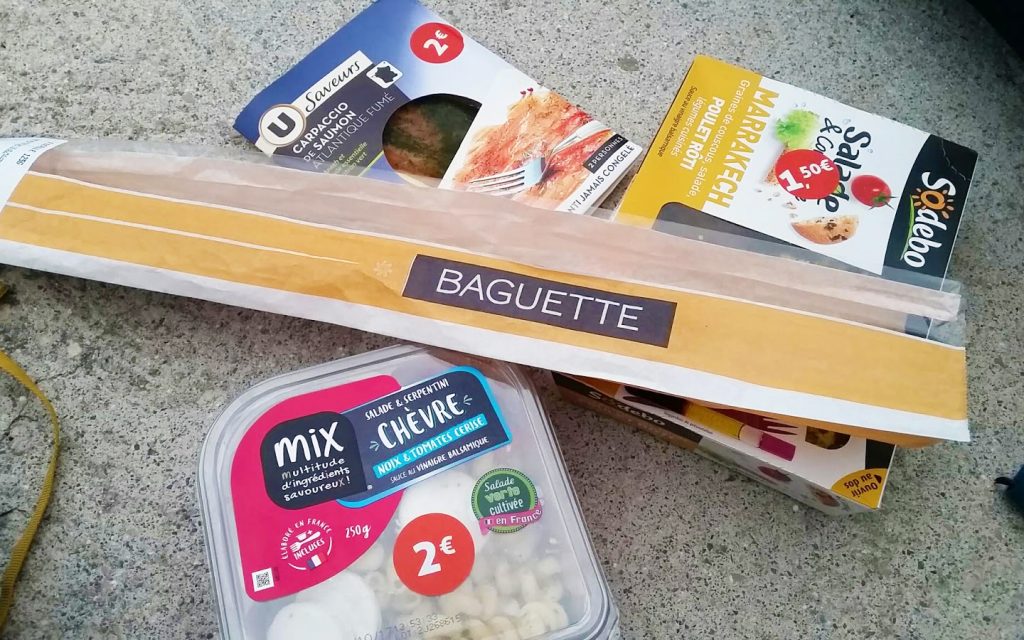
That first evening in Menton set a precedent, and for the rest of our epic 1250-kilometre walk across France, we dined in restaurants only two or three times. We often stopped overnight in places where there were no restaurants, or no open restaurants, or no affordable restaurants, within walking distance. And even if there were, after a long day of walking, we were often too tired to go out, and just wanted to spend a quiet evening in our accommodations.
Grocery shopping on a Long Walk
If you are lucky enough to have a grocery store within walking distance of your accommodations, the first rule is, check out the hostel kitchen BEFORE you do your shopping. There may well be some ingredients you can use in the FREE FOOD bin, such as pasta, rice or oatmeal: travellers often buy a whole package, cook only one or two portions, and leave the rest. Or the hostel may provide free pasta and rice: at very little cost, they have provided you with the basics on which to build a meal. One evening when we were left without supplies, and not a grocery store in sight, we had plain white rice from the hostel kitchen for dinner – livened up considerably by adding Korean hot sauce from a fellow pilgrim’s backpack!
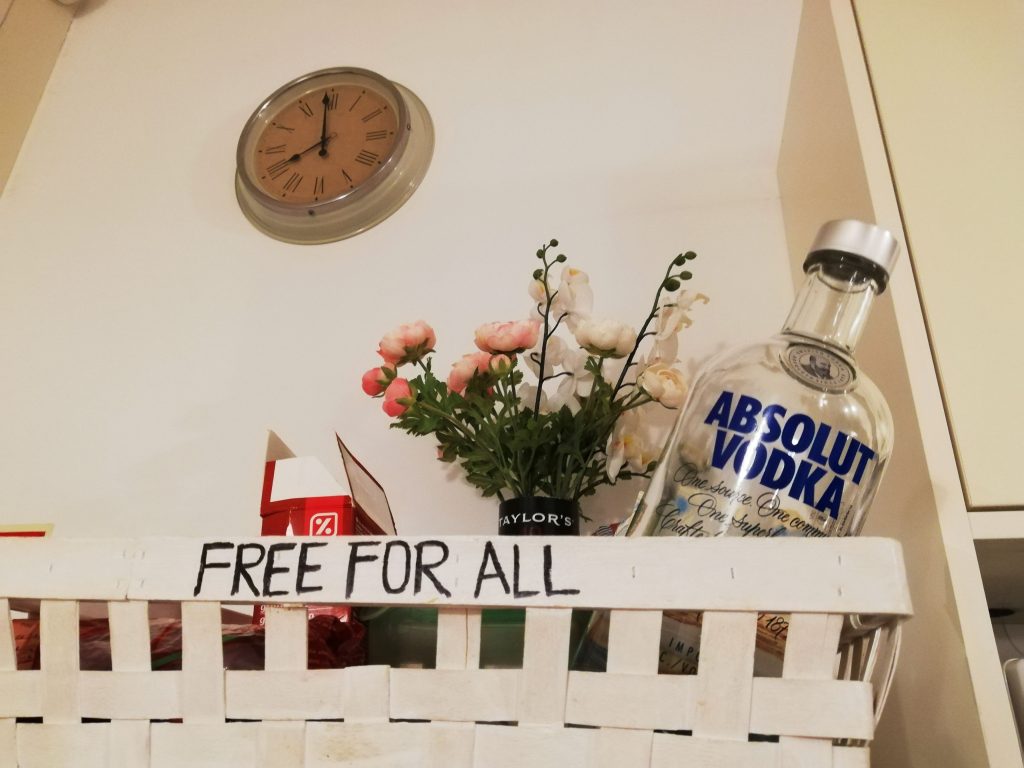
You also need to know, before you plan your meal, whether the kitchen comes with such essentials as salt and cooking oil, and what sorts of pots and pans are available. Don’t make the mistake we did in one hostel in France! We decided to make a spaghetti dinner for six, and bought plenty of pasta, tomato sauce, and sardines from the hostel’s supply cupboard. But then we discovered that what we had thought was a big pot in a kitchen cupboard was actually a giant coffee urn, and the only saucepans were tiny little ones: we had to break all that spaghetti in half, and boil it one portion at a time!
In Monteriggioni, on the Via Francigena in Tuscany, on the other hand, the pilgrim hostel has a very well-equipped kitchen. As soon as we saw it, I exchanged glances with the only other Italian walker in our group: we both had the same idea. We would cook a great Italian dinner for all the other, foreign pilgrims! There were eight of us, plus two more who arrived at the last minute and were of course invited to join us at the table. But… Monteriggioni does not have a supermarket! Or any other kind of regular grocery store, only a bar that also serves as a deli, selling gourmet specialty products for tourists. We stocked up on gourmet pasta and little jars of fancy tomato sauce, as well as a selection of local cheeses and hams and a bottle or two of Chianti, and prepared a delicious and much appreciated meal for everyone…. but the cost per head was almost the same eating at a restaurant!! Coming up with a meal plan using only the utensils and ingredients you have at your disposal in a hostel kitchen in a remote village without a supermarket can be a fun challenge…. a sort of pilgrims’ version of the mystery box on Masterchef! 😉
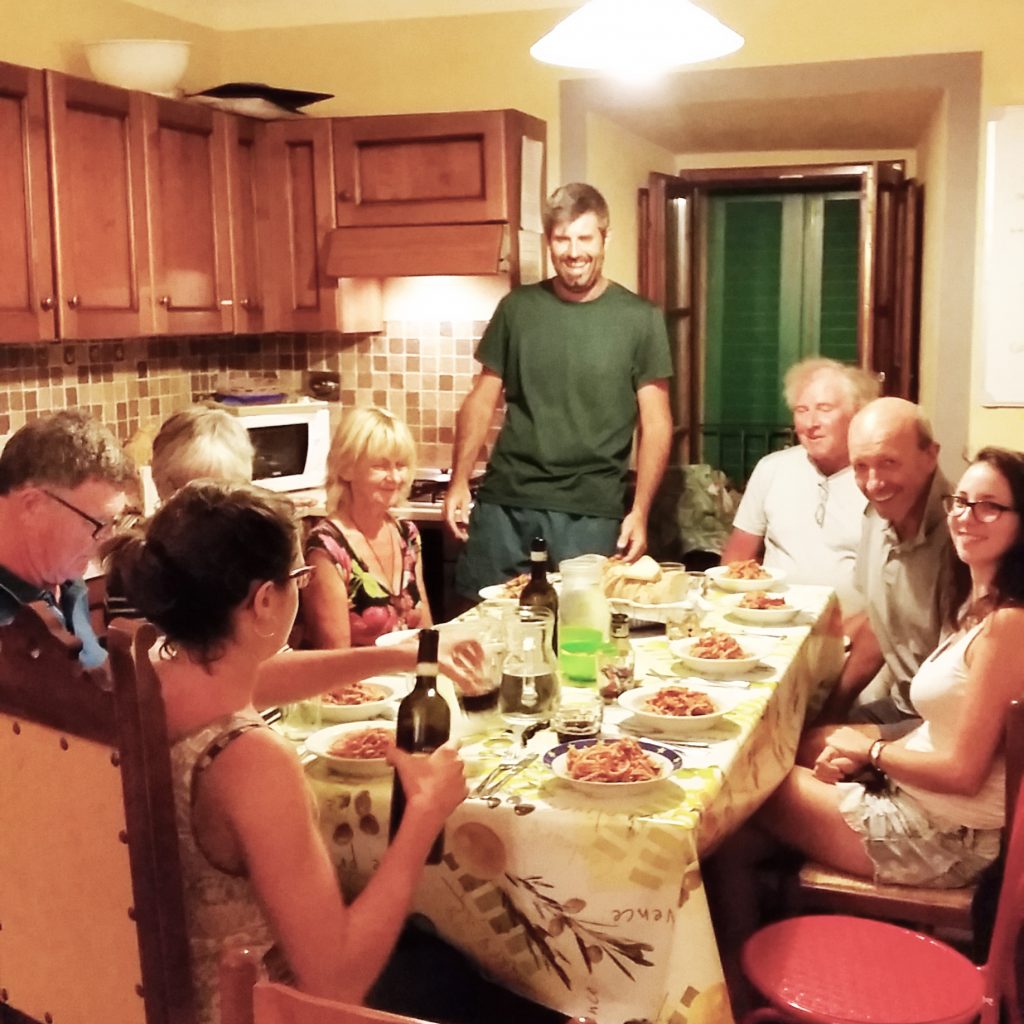
Garlic, anyone?
Another spaghetti-related adventure on the trail in France involved garlic, an essential ingredient in the recipe our group had decided to make. There wasn’t any in the kitchen of the gite, so we asked the owner if she could supply us with a clove from her home next door. She didn’t produce the garlic until about an hour later, by which time we had finished cooking our (garlic-free) sauce. So we added it, raw, right before serving! The following day, we all went shopping, individually, and everyone in our group bought garlic. Lots of garlic, to make sure we would never have to do without it again!
800 kilometres later, I was still finding cloves of garlic in the side pockets of my backpack… well, at least we could be sure we were safe from vampires on our walk! 😊
Ever since then, before leaving home I tuck a few cloves of garlic into a Ziploc bag, along with some of those individual portion-packets of olive oil, salt and vinegar that you find in restaurants these days, since EU regulations and Covid put an end to “unhygienic” communal olive oil bottles and salt shakers! In a separate Ziploc bag, I also carry a variety of teabags and single-portion packets of instant coffee for emergency use, so I can rest assured I will never, ever have to start walking without coffee in the morning. And if I’m walking in a rural area where I can’t be certain that there will be a source of food at my destination every night, I also carry a packet of soup mix in my backpack, in addition to my usual supply of nuts and dried fruit, cheese and biscuits. I also like to carry a robust but lightweight plastic box in my pack, for taking away leftovers from hostel or restaurant meals, or protecting fruit that I might pick along the trail, such as blackberries and figs, or other items that might otherwise get squashed and make a mess in my pack!
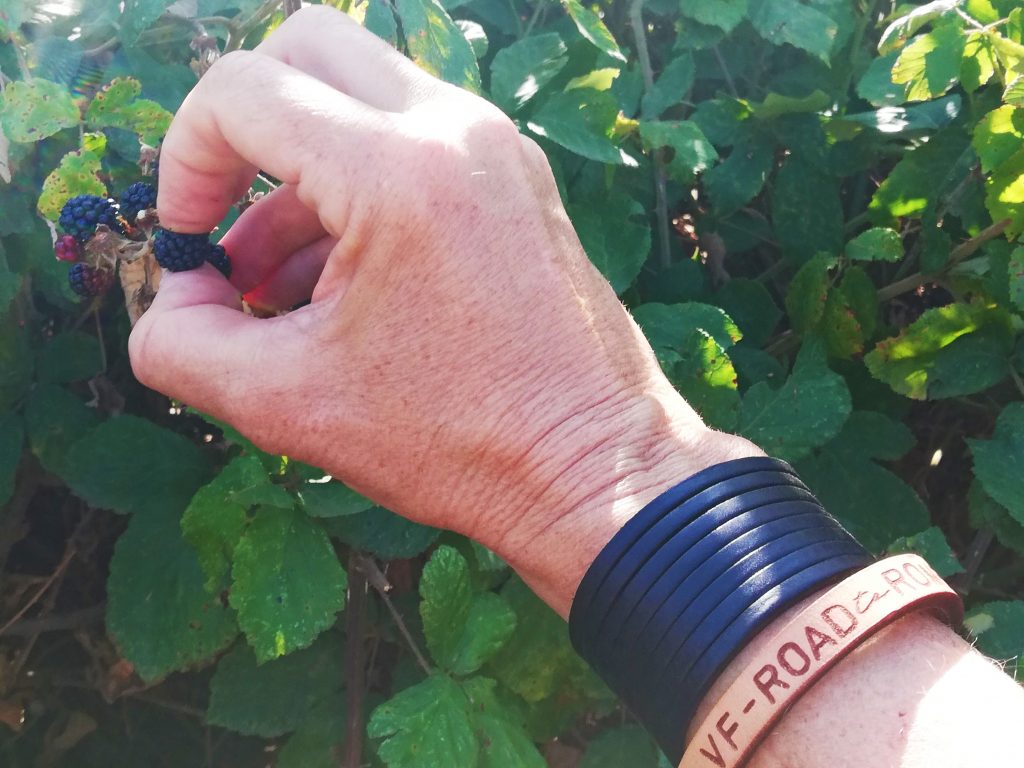
The company of the baguette… and the smelly cheese!
On the subject of carrying food in your backpack, French cheeses deserve a word apart. As you may imagine, in many small villages in France, the most readily available picnic foods are bread and camembert-like varieties of cheese. We nicknamed our group The company of the baguette because we always had one or two of these initially delicious but rapidly hardening loaves strapped to the side of our packs. While the cheese, tucked away in the top pocket of the pack, gave off an aroma reminiscent of hikers’ socks that wafted in the air behind us, or, if the wind was blowing from behind, directly into our faces! French cheeses are best consumed immediately after purchase. With the exception of the hard cheese varieties from the Pyrenees: we stocked up at a quality cheese shop in Oloron-Saint-Marie, and, at least a week after crossing the Pyrenees into Spain, my walking companion dug a surviving piece of French cheese out of his pack and shared it with me: I had never tasted such a delicious cheese! It had aged to perfection, unrefrigerated in the depths of his backpack!
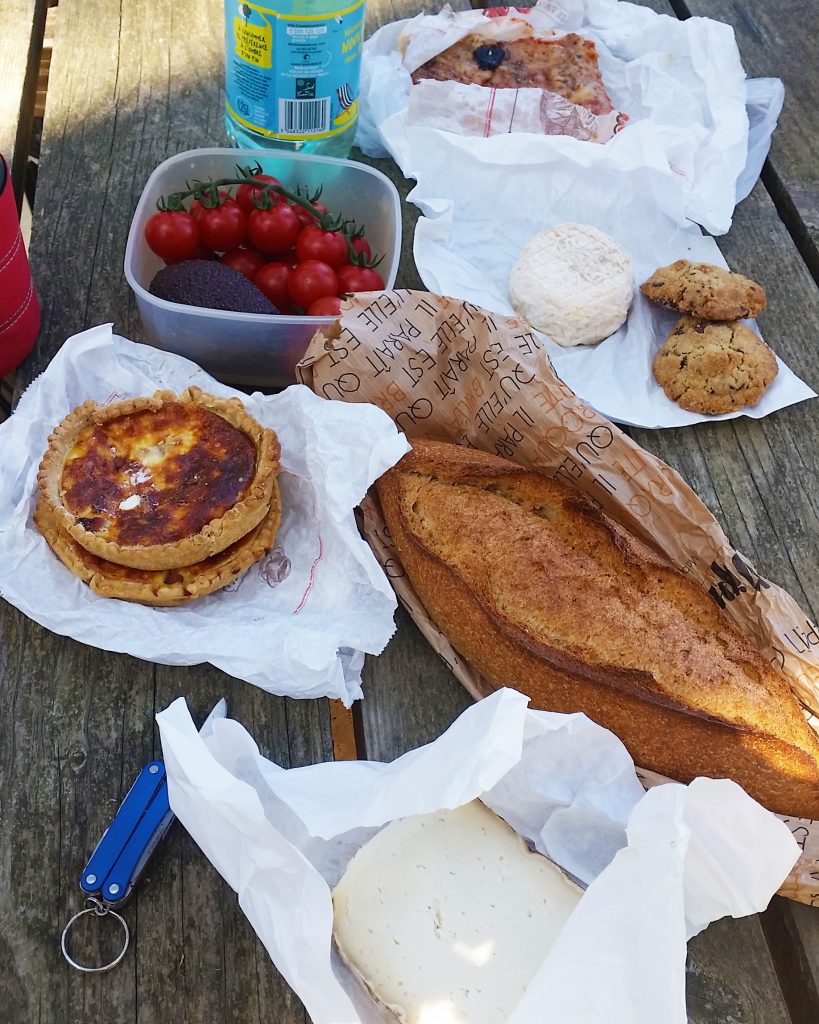
What to cook on a long walk: menu planning
So, supposing you have a source of ingredients, a kitchen to cook in, and an assortment of pots and pans: what should you make for dinner? I have seen walkers grilling seafood, and even baking a cake, in hostel kitchens, but my advice is: keep it simple. Pasta with a vegetable or two, sautéed in olive oil with garlic. A salad of beans, lettuce and tomatoes, and a couple of hard-boiled eggs (boil the whole pack and have the rest for a classic picnic lunch the next day). A ready-made soup that merely requires heating, with a slice of quiche and a fresh baguette.
Whatever you come up with, it’s sure to taste delicious, after a long day of walking!
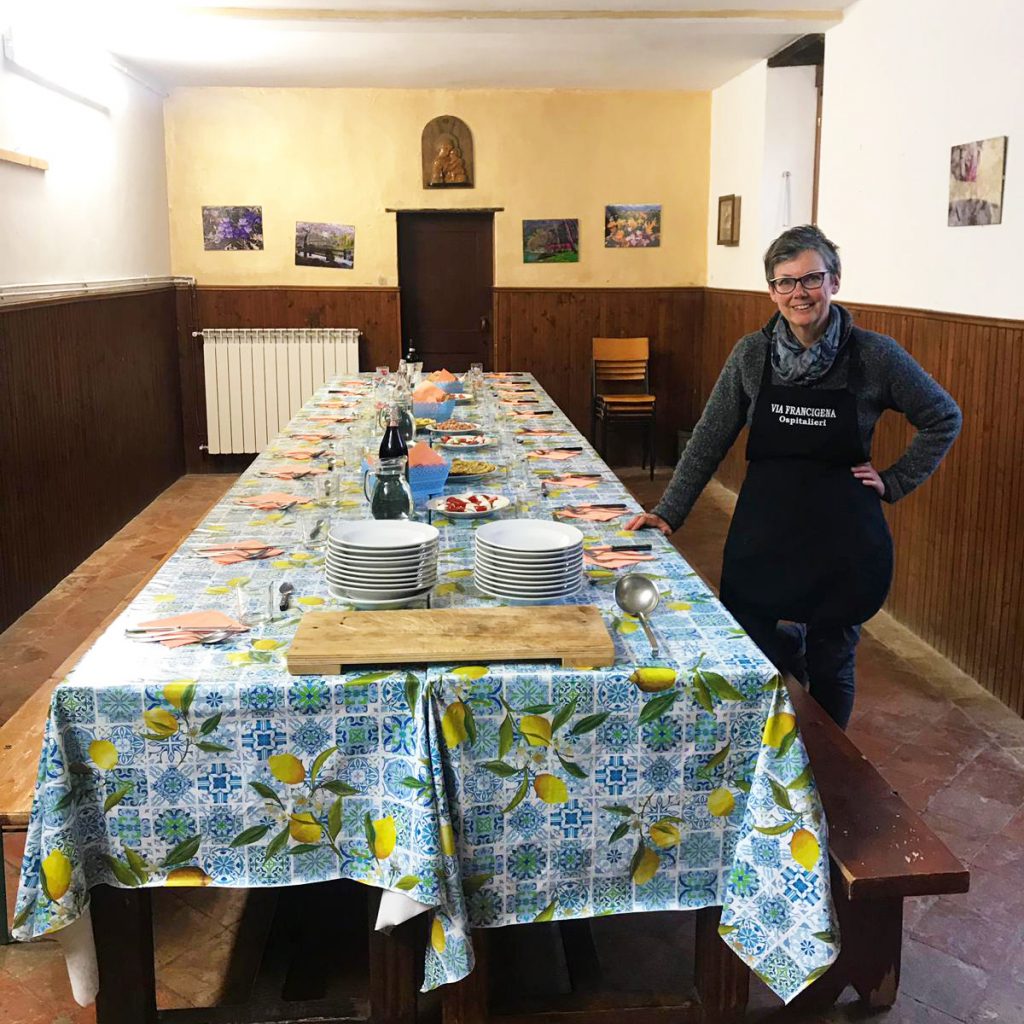
A couple of favourite recipes “for the road”
Zucchini “carbonara”
I often make this vegetarian version of spaghetti alla carbonara at home, and when I saw that the very limited selection of ingredients available for purchase at our hostel included spaghetti, zucchini, onions and eggs, I made this for my walking buddy and myself.
While heating the water and boiling the pasta, sauté sliced onion in olive oil and add thinly sliced zucchini rounds. When the spaghetti is cooked, add it to the zucchini in the frying pan, turn off the heat and add a beaten egg or two, then toss to mix. Grate some cheese on top, if you have any ageing in your backpack!
Ratatouille
If I take a rest day and stop in the same place for two nights, I make a big pot of ratatouille, eat some the first night, have some more the second night, and then pack up the rest to take with me for the road. It’s good hot or cold, served over pasta, cous-cous, or potatoes, with cheese, eggs, or beans for protein, or just on its own – to make sure you’re getting enough vegetables while on the road!
Sauté an onion in olive oil and add chopped bell peppers, eggplant and zucchini (you can also add other vegetables: carrots, potatoes, peas or beans….). Sauté until limp, stirring from time to time, then add a splash of wine, if you have a bottle on hand, and when it evaporates, add tomato sauce and simmer.
Add whatever spices you can find in the hostel kitchen: classic Provençal herbs such as thyme, oregano, etc., or go the oriental route and add curry, cumin, turmeric….
Tastes even better the next day – and the day after!
What do you like to cook on the road? Do you have any favourite recipes to share?






